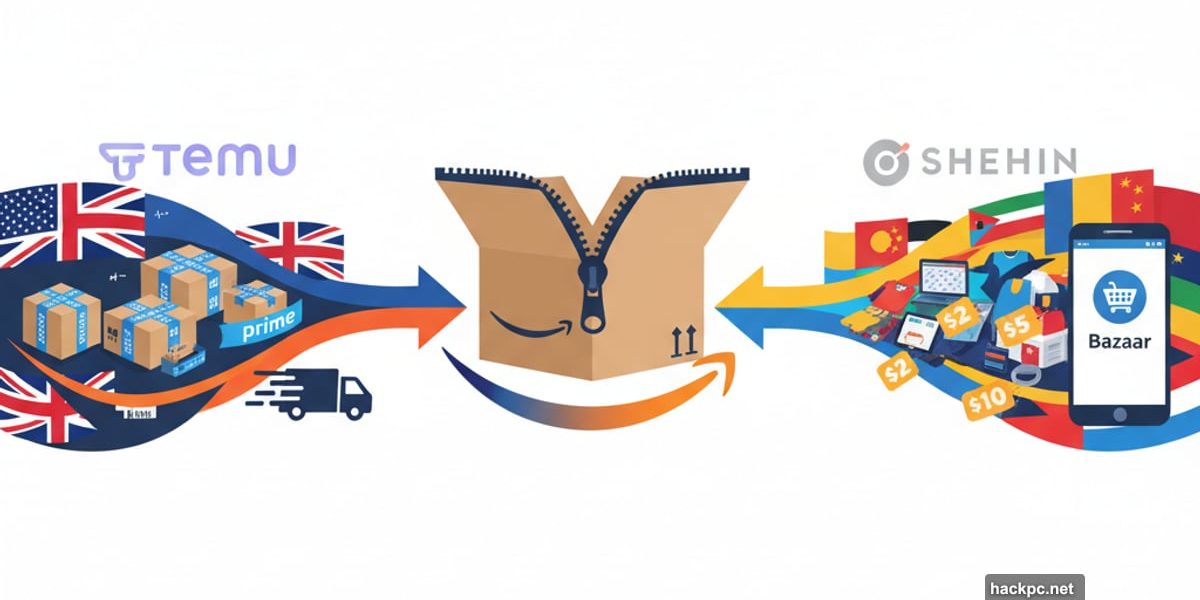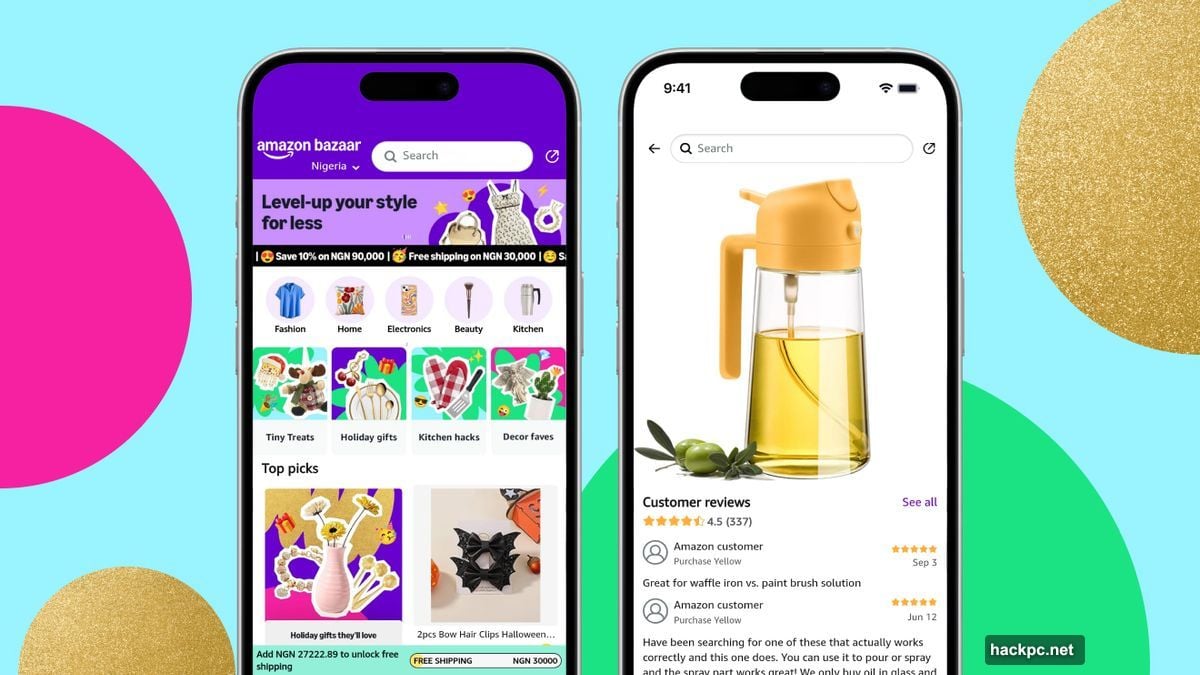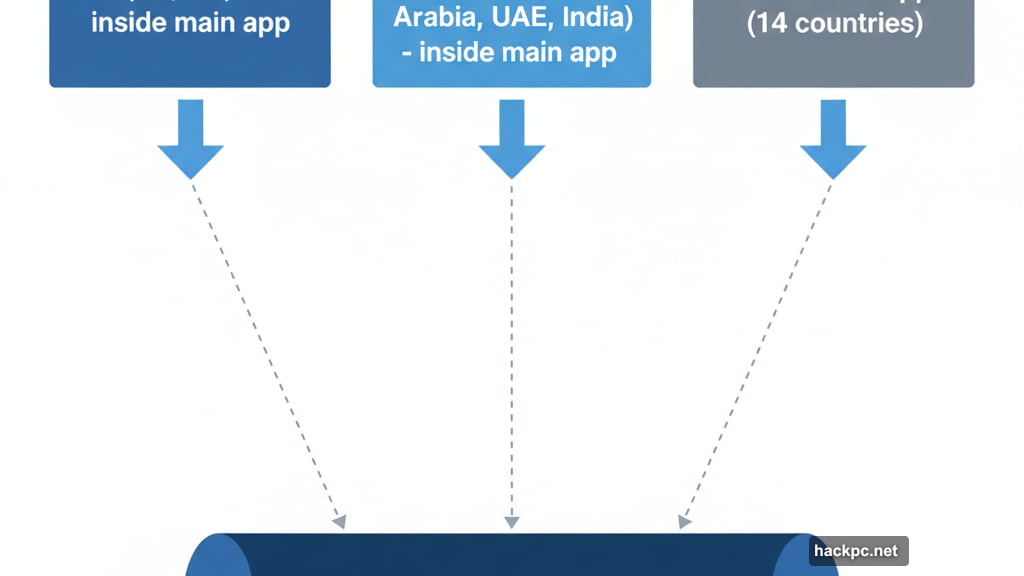
Amazon just carved out its ultra-cheap inventory into a standalone shopping experience. The move targets markets where Temu and Shein dominate.
The new Amazon Bazaar app launched Friday across 14 countries in Asia, Africa, and Latin America. Most items cost under $10. Some go as low as $2. Plus, Amazon plans to expand to more markets soon.
Here’s what makes this interesting. Amazon already runs a budget shopping section called Amazon Haul in wealthier markets like the U.S. and U.K. That stays inside the main Amazon app. But in emerging markets, Amazon decided a separate app makes more sense.
Why Amazon Needs a Dedicated Discount App
Temu and Shein own the budget shopping category among younger users. TikTok Shop joined the fight recently. So Amazon watched these Chinese platforms steal market share in price-sensitive regions.
The solution? Meet customers where they already shop for cheap stuff. A dedicated app signals Amazon takes budget shopping seriously now.
Consider the numbers. Bazaar offers “hundreds of thousands” of products. Fashion, home goods, electronics, lifestyle items. All priced aggressively. Meanwhile, the main Amazon app focuses on Prime members and faster delivery.

In fact, splitting these experiences makes strategic sense. Budget shoppers want different things than Prime members. They’ll wait two weeks for free shipping if it means paying $2 instead of $20.
Confusing Branding Creates Market Overlap
Amazon now runs three versions of essentially the same concept. Haul operates in eight wealthy countries inside the main app. Bazaar exists as a section within Amazon’s main app in Mexico, Saudi Arabia, UAE, and India. Plus, the new standalone Bazaar app covers 14 other markets.
Why three different implementations? Amazon claims the names “better resonate with local language preferences and cultures.” Translation: they’re testing what works where.
But here’s the problem. This fragments the user experience. Customers in neighboring countries get wildly different shopping interfaces for identical inventory. That’s messy.
Moreover, it complicates Amazon’s logistics and marketing. Running separate apps means separate updates, separate customer support flows, separate promotional campaigns. The overhead adds up fast.

The App Borrows Heavy From Chinese Competitors
Bazaar copies features that made Temu and Shein successful. Social lucky draws create urgency. Gamified promotions keep users engaged. First-time customer discounts (50% off initial delivery) lower the barrier to trying the app.
Amazon also maintained familiar elements. Customer reviews and star ratings appear on product pages. Users log in with existing Amazon credentials. Checkout accepts major credit cards. Returns stay free within 15 days.
However, delivery times can’t match Prime. Orders take up to two weeks. That’s the tradeoff for rock-bottom prices. Free shipping requires meeting local minimum purchase thresholds. Otherwise, customers pay standard delivery fees.
Six Languages, 14 Markets, Same Inventory Problem
The app supports English, Spanish, French, Portuguese, German, and Traditional Chinese. It’s live in Hong Kong, Philippines, Taiwan, Kuwait, Qatar, Bahrain, Oman, Peru, Ecuador, Argentina, Costa Rica, Dominican Republic, Jamaica, and Nigeria.
Notice something? These markets represent vastly different purchasing power levels. Kuwait has high per-capita income. Nigeria has massive population but lower average wages. Yet both get the same app with the same inventory.

That creates challenges. Product selection that works in Taiwan might flop in Jamaica. Pricing that feels like a bargain in Hong Kong could seem expensive in Ecuador. Amazon will need heavy localization to succeed across such diverse economies.
Amazon’s Late Entry Into Ultra-Budget E-Commerce
Temu launched in 2022 and exploded globally. Shein dominated fast fashion for years before that. TikTok Shop arrived recently with built-in social commerce advantages. Amazon Haul only debuted last November.
So Amazon is playing catch-up. The separate app strategy tries to accelerate adoption in markets where the main Amazon brand doesn’t carry the same weight as in the U.S.
But can Amazon compete on price alone? The company built its reputation on fast delivery, customer service, and convenience. Strip away those advantages, and it’s just another discount marketplace fighting on razor-thin margins.
Plus, Chinese competitors have supply chain advantages Amazon can’t easily replicate. Direct manufacturer relationships. Lower production costs. Entire logistics networks optimized for ultra-cheap goods.

The Real Test Comes in Emerging Markets
Amazon’s core business thrives in wealthy countries. Prime membership, same-day delivery, and premium products drive revenue. But billions of potential customers in Asia, Africa, and Latin America can’t afford that experience.
Bazaar represents Amazon’s bet that it can capture those customers with a stripped-down, price-first approach. The separate app removes any confusion with the premium Amazon brand. It creates clear positioning as the place for deals, not speed.
However, success requires massive scale. Budget e-commerce only works with huge volume to offset tiny margins. Amazon needs millions of users across these 14 markets just to break even on operations.
Meanwhile, competitors aren’t standing still. Temu keeps dropping prices and expanding selection. Shein improves delivery times. TikTok leverages social features Amazon can’t match.
The outcome isn’t certain. Amazon has resources and logistics expertise. But it’s fighting on unfamiliar terrain against battle-tested competitors who’ve spent years perfecting ultra-budget e-commerce.
Choose your shopping app wisely. The race for budget-conscious consumers just got more crowded.



Comments (0)